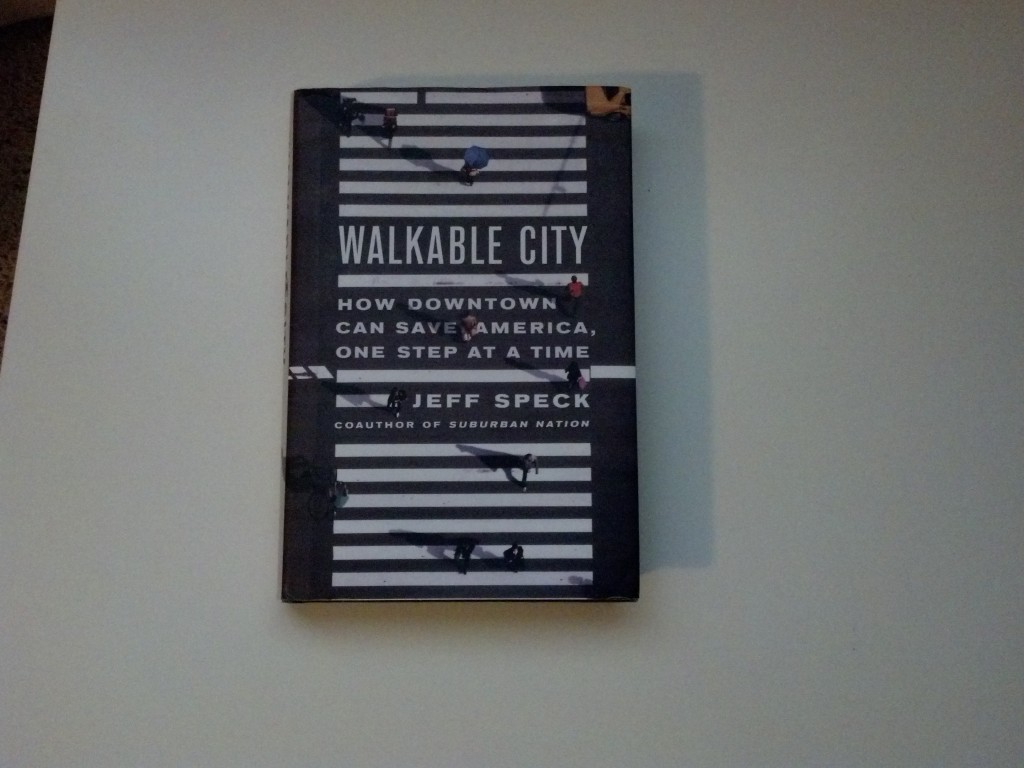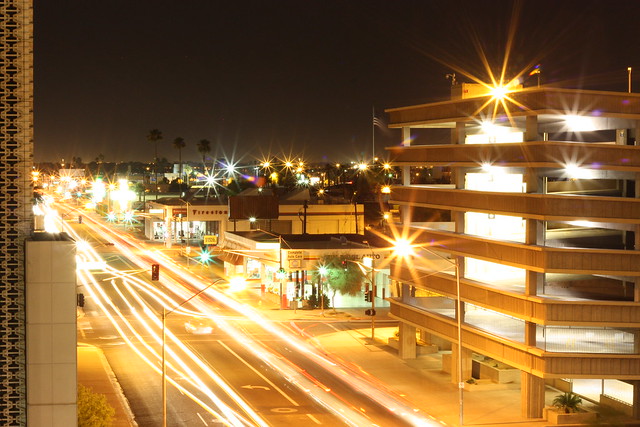In the past decade I’ve studied in the Spanish beach town of Alicante; backpacked through Dublin, Aberdeen, London, Amsterdam and Prague; crashed on a couch for two months in Boulder; taught English in Koga, Japan – on the outskirts of Tokyo; freelanced in Santiago, Chile; and visited friends and family in San Diego, New York and San Francisco.
What’s the common denominator?
The void I feel every time I come back to Phoenix.
That sounds harsh, but don’t take it personally.
The Valley is my home and has many assets – my family and friends are here, I have a great job, the weather is nice, cost of living is pretty manageable, Spring Training and convenient outdoor recreation – but Phoenix still pales in comparison to the excitement I find in many of those other cities.
Often, I struggled to grasp why I felt such a void in Phoenix. I even felt guilty for always getting the travel bug, and not being able to find the excitement, culture and lifestyle I had enjoyed elsewhere.
Why should things be so different back home? Am I being lazy? Maybe the familiar setting is making too comfortable?
I worried that I was being unfair or jaded toward my hometown.
But then, I heard city planner Jeff Speck interviewed on NPR’s Fresh Air, talking about his book “Walkable City” and, specifically, the four factors that make a city walkable: to be favored, a walk must be useful, safe, comfortable and interesting.
- Useful: Most aspects of daily life are located nearby and organized in a way that walking serves them well.
- Safe: Streets are designed so pedestrians are protected from being hit by automobiles.
- (“pedestrian vs automobile” is a recurring and important theme; if you want to be dramatic, we can call it “man vs machine”)
- Comfortable: Buildings and landscapes shape urban streets into well-defined, cozy outdoor living rooms, rather than wide-open spaces.
- Interesting: Sidewalks are lined by unique buildings with friendly faces. Signs of humanity abound.
I bought the book and tore through it – taking notes, nodding my head and exclaiming “A ha!” (silently, to myself) at many points along the way.
Speck articulated that lurking, previously unnamed void in Phoenix: walkability. And I no longer felt guilty for being frustrated with the sprawling Valley’s automobile-centric culture, lifestyle and DNA.
Yes, it was disheartening to make the connections to many wrong turns our city has taken over the years. But moreover, the inspirational book gave me ideas that (in my Layman opinion) would do wonders for Phoenix.
I’ll elaborate on those ideas in another post. In this article, you’ll read highlights from “Walkable City,” Speck’s Ten Steps of Walkability, and the concepts that resonated with me.
I hope it sheds some light on why our cities need saving, and convinces you to read the book and champion the change in your city.
The Ten Steps of Walkability
1. Put cars in their place: reclaim cities for pedestrians; understand how the car and its minions have distorted design decisions in American cities.
- “Traffic studies are bullshit” because they’re performed by traffic engineering firms that benefit from more road work (conflict of interest).
- They also ignore induced demand: when increasing the supply of roadways lowers the time cost of driving, causing more people to drive, thus canceling any reductions in congestion.
- Many streets are controlled by the State Department of Transportation and state engineers (who need to keep traffic counts up), instead of the communities who use them.
- We need to welcome cars in proper number and at the proper speed. Congestion pricing is an aggressive fee for drivers entering the congested city on weekdays – revenue goes toward a progressive transportation agenda.
2. Mix the uses and fix the zoning problems: place proper balance of activities within walking distance of each other.
- Reorient economic development to establish a proper balance of activities downtown with updated and inclusionary zoning
- More market-rate housing, while also promoting those things that residents want and need: parks and playgrounds, supermarkets and farmer’s markets, cafe’s and restaurants and eventually good schools.
3. Get the parking right: parking requirements and pricing determine the disposition of more urban land nationwide than any other factor. Use it to benefit the city.
- Cities are slaves to inappropriate parking requirements (often imported from the suburbs), leaving too much parking and too many empty spaces.
- “Pensacola Parking Syndrome:” replacing beautiful old buildings with ugly parking lots in such number that nobody wants to go downtown anymore.
- Most cities lack a comprehensive parking policy that decouples and deals with off-street and on-street parking together.
- Find the right price for curbside parking so that 85% of spaces are occupied – reduces congestion of people driving around looking for a spot.
4. Let transit work: walkable cities rely on transit, whose success depends and failure depends on design (this was my favorite chapter!)
- Local Density: what matters is how many people live near the transit line.
- Neighborhood structure should have a center and an edge. It should be compact, diverse and walkable. The collection of neighborhoods should be interspersed with districts like universities and airports, and corridors like rivers and railways.
- Sprawl has no use for transit, since it’s organized around the automobile.
- The only way to reduce traffic is to reduce roads or increase the cost of using them. Why take the train when you can drive there just as quickly and park for cheap/free?
- Bus systems should focus on conditions where certain conditions can be met to offer a superior experience to driving:
- Urbanity: locate all significant stops right in the heart of the action
- Clarity: keep the route simple – a line or loop with as few diversions as possible
- Frequency: provide frequent service or none; people hate to look at schedules
- Pleasure: create a mobile form of public space – big windows, wifi, inward facing seats
5. Protect pedestrians: control the many factors that determine a car’s speed and a pedestrian’s likelihood of getting hit.
- Some examples are: block size, lane width, turning motions, direction of flow, signalization and road geometry.
- Smaller blocks are safer and more walkable. Conversely, big-block, multi-lane systems are both harder to cross and easier to speed on.
- Safe streets are lined by both parked cars and trees which form a barrier between the pedestrian and the roadway, and also slow traffic.
6. Welcome bikes: bikes thrive in walkable cities; bikeability makes driving less necessary.
- Climate plays a small role in determining a city’s bikeability (see Minneapolis)
- There needs to be urbanism with streets designed to welcome bikes: shared routes, separated bike paths, sharrows
7. Shape the spaces: it’s counter-intuitive, but we need a sense of enclosure to feel safe as pedestrians. Public spaces are only as good as their edges, and too much gray or green (parking or parks) can cause a would-be walker to stay home.
- We feel comfortable walking in cities with well-defined edges and spatial definition.
- Empty lots – aka Missing Teeth – make walking unpleasant.
- We need skinny towers atop lower, side-walk hugging bases – if we get the design right, people will walk in almost any climate.
8. Plant trees: (duh, but not just palm trees)
- Street trees offer shade, reduce ambient temperatures, absorb rainwater and tailpipe emissions, provide UV protection and limit the effects of wind.
- They also slow cars (because drivers respond to broad recovery zones – open spaces – by speeding) and improve the sense of enclosure.
9. Make friendly and unique faces: pedestrians need to be entertained. Lively streetscapes have three main enemies: parking lots, drug stores and star architects (all three favor blank walls, repetition and disregard for entertainment)
- Create active, open, lively edges
- Pharmacies and other national chains offer unrewarding views: blank walls, shelves and tinted windows.
- Need to disguise parking structures with “invisible parking”: place retail on bottom floor of parking garage – hide tilted car ramps from edges of the building.
- Need a form-based code for buildings: how they meet the ground, the street and the sky. How they handle the transition from public to private realm; how they hide their parking; small scale details that engage people when they walk by.
10. Pick your winners: make a conscious choice about the size and location of the city’s walkable cores
- Where can spending the least money make the most difference?
- Urban triage: focus on improving streets that are already formed by buildings that have the potential to attract and sustain street life
- A Streets: best posted to benefit
- B Streets: tougher, but needed to tie the best streets together into a proper network
- C Streets: automotive; maintain them, but don’t worry about walkability
This last point – picking the winners – teases my next post in which I’ll offer a few ways we could make Phoenix a more walkable, attractive, healthier and happier place to live.
To my discredit, I’ve never been very involved in the city’s planning, politics, activism or community initiatives. So, one of my goals is to talk to the folks involved in making these decisions that shape our city.
I attended a MyPlanPhx public forum that gave an interesting glimpse at the city’s planning process. To the city’s credit, many of the folks I spoke with had heard about the book, “Walkable City.” Plus, a colleague mentioned that Jeff Speck is visiting the Valley for Phoenix Urban Design Week in April, which I’m looking forward to attending.
More to come.
Click here to see the book on Amazon. Learn more about Jeff Speck at www.jeffspeck.com.
P.S. Obviously many people in Arizona prefer large houses, SUVs, swimming pools and gated subdivisions over the urban lifestyle that I’m lobbying for. That’s fine, it’s just not for me. Enjoy the suburbs, but let’s not ignore Downtown.
Update: Click here to read my follow-up post on the core issues Phoenix needs to address to achieve a Walkable future.


